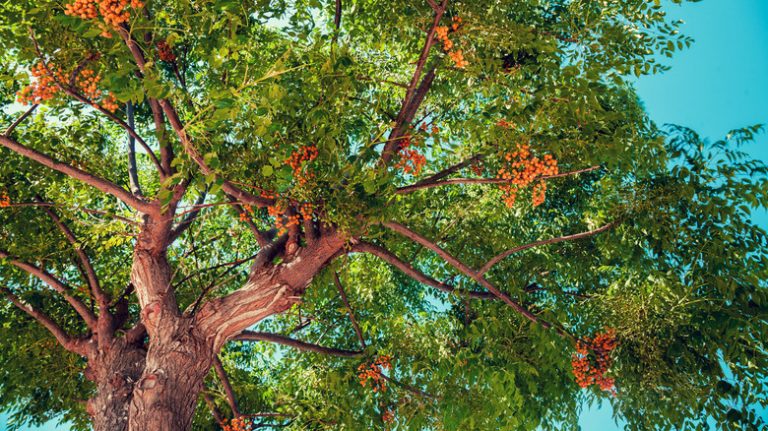The Kansas Forest Service (KFS) is a highly interesting organization that focuses on the conservation, protection, and development of trees and forests throughout Kansas. With a wide range of services and initiatives, the KFS is a valuable resource for anyone looking to learn more about the benefits of trees and how to properly care for them.
One of the most important tasks of the Kansas Forest Service is to pick the right types of trees for planting in different regions of the state. They provide valuable information on the characteristics and habitat requirements of various tree species, such as the beautiful blue-green foliage of the spruce trees, or the reddish-brown bark and open habitat of the junipers.
Another interesting fact about the Kansas Forest Service is their ongoing research on tree pests and diseases. They work to identify and control various pests that can harm trees, such as the blight that affects the blue spruce. They also provide valuable information on how to properly prune and care for trees in order to prevent pest infestations.
The Kansas Forest Service is also a great source of information on how to properly plant and care for trees. They provide guidance on the best techniques for planting and transplanting trees, as well as tips on how to ensure their healthy growth and maturity. For example, they recommend planting trees in well-drained soil and providing them with the right amount of water, humidity, and sunlight.
The Kansas Forest Service plays a crucial role in the conservation and protection of Kansas forests. With their extensive knowledge and expertise, they provide valuable resources and services to help individuals and communities take care of their trees and create healthier and more sustainable environments for future generations.
How to Grow and Care for Rocky Mountain Juniper
The Rocky Mountain Juniper (Juniperus scopulorum) is a species of coniferous tree native to the western United States. It is commonly found in rocky habitats throughout its range. Here are some tips on how to grow and care for this unique evergreen tree:
- Planting: Rocky Mountain Junipers can be grown from seed or propagated through cuttings. Plant the seeds in a well-draining soil mix and keep them moist until they germinate. If using cuttings, root them in a potting mix and keep them at a temperature of 70-75°F (21-24°C).
- Light and Soil: These junipers prefer full sun and well-drained soil. They can tolerate a wide range of soil conditions, including dry and alkaline soils.
- Watering: Once established, Rocky Mountain Junipers are drought-tolerant and require minimal water. Water them deeply once a week during dry periods. Avoid overwatering, as it can lead to root rot.
- Pruning and Care: Prune this juniper in early spring to maintain its shape and remove any dead or diseased branches. It has reddish-brown bark and blue-green, scale-like leaves. Use a pair of pruning shears to trim the branches.
- Pests and Diseases: Rocky Mountain Junipers are relatively pest-free but can occasionally be affected by spider mites. To prevent infestations, inspect the tree regularly and treat with an appropriate insecticide if needed. They are also susceptible to blight, which can be controlled by proper care and pruning.
- Uses and Benefits: Rocky Mountain Junipers have many uses and benefits. They are commonly planted as ornamental trees in gardens and parks due to their beautiful evergreen foliage. They can also be utilized for windbreaks, erosion control, and wildlife habitat. The female trees produce bluish-gray berries, which are often eaten by birds and wildlife.
Overall, growing and caring for Rocky Mountain Junipers is relatively simple. With the right conditions and proper care, you can enjoy the beauty and benefits of these unique trees in your outdoor space.
Additional Information:
- Botanical Name: Juniperus scopulorum
- USDA Hardiness Zone: 4-7
- Growth Habit: Large tree with a pyramidal crown
- Size: Can reach heights between 20-40 feet (6-12 meters) and have a spread of up to 15 feet (4.5 meters)
- Common Names: Rocky Mountain Juniper, Colorado redcedar
- Related Juniper Species: Juniperus osteosperma (Utah juniper), Juniperus virginiana (Eastern redcedar)
- Uses: Wood utilization, overwintering habitat for birds and other wildlife, landscape design
- Fact: The Rocky Mountain Juniper is the state tree of Kansas.
Rocky Mountain Juniper Care
Rocky Mountain Juniper, also known as Juniperus scopulorum or Juniperus scopulorum ssp. scopulorum, is a type of juniper that is native to the Rocky Mountains region of the western United States. This species of juniper is known for its interesting characteristics and is often planted in landscapes for its ornamental value.
Here are some care tips for growing and maintaining Rocky Mountain Juniper:
- Planting: When planting Rocky Mountain Juniper, choose a location that receives full sunlight. The soil should be well-draining, as this type of juniper does not tolerate wet conditions. Add organic matter to the soil to improve drainage if necessary.
- Watering: After planting, water the juniper thoroughly and then allow the soil to dry out slightly before watering again. Once established, Rocky Mountain Juniper is drought-tolerant and does not require frequent watering.
- Fertilizer: Apply a slow-release fertilizer formulated for evergreen trees in early spring before new growth begins. Follow the package instructions for proper application rates.
- Pruning: Prune Rocky Mountain Juniper in early spring before new growth appears. Remove any dead or diseased branches, and shape the juniper as desired. Avoid pruning too much at once, as this can weaken the plant.
- Propagation: Rocky Mountain Juniper can be propagated from seeds or hardwood cuttings. Seeds can be collected from mature female cones in the fall and planted in well-draining soil. Hardwood cuttings should be taken in late summer or early fall and rooted in a propagating medium.
- Pests and Diseases: Rocky Mountain Juniper is relatively resistant to pests and diseases. However, it can be occasionally affected by spider mites and cedar-apple rust. Monitor the foliage for any signs of pests or diseases, and take appropriate action if necessary.
- Overwintering: Rocky Mountain Juniper is cold hardy and can tolerate freezing temperatures. However, in regions with extremely cold winters, it may benefit from some protection. Mulch the base of the plant to insulate the roots, and cover the foliage with burlap or other protective material.
By following these care tips, you can enjoy the beauty of Rocky Mountain Juniper in your landscape. Its foliage is usually blue to gray-green and forms scale-like leaves that are arranged in pairs or opposite each other along the branchlets. The bark is reddish-brown and peels off in long strips. The berries are small, waxy, and range in color from green to bluish-gray.
Rocky Mountain Juniper attracts a variety of wildlife, including birds such as juncoes and jays. Its seeds are eaten by small mammals. The juniper also provides cover and nesting sites for birds and other animals.
As a native species, Rocky Mountain Juniper plays an important role in the ecosystems of the western United States. It is often used in reforestation efforts and as a windbreak tree. The Kansas Forest Service and other related organizations provide resources and support for the conservation and management of this species.
Planting
Junipers are a common type of tree that can be found throughout the United States. They are known for their evergreen forms and range in size from small shrubs to larger trees. Junipers are a valuable resource for wildlife, providing food and habitat. They are also highly adaptable to a wide range of soil types and light conditions.
The most common juniper species is Juniperus virginiana, also known as Virginia juniper or eastern red cedar. It is an evergreen tree that can grow up to 40 feet tall. The leaves of the tree are needle-like and greenish-yellow in color. The tree produces small, blue-black berries that are often eaten by birds and other wildlife.
Planting junipers is a simple process. The first step is to gather seeds from existing trees or purchase them from a reliable source. The seeds should be planted in pots or containers filled with potting soil. They should be lightly covered with soil and watered regularly. It is important to keep the soil moist but not overly wet. After germination, the seedlings can be transferred to larger pots or planted directly into the ground.
Junipers are highly adaptable and can be grown in a variety of soil types, including sandy, rocky, and clay soils. They are also tolerant of a wide range of light conditions, from full sun to partial shade. Junipers are often used in landscaping for their ability to add structure and texture to a garden or yard. They can be planted in rows to create a windbreak or privacy screen, or they can be used as individual specimen plants.
Caring for junipers is relatively simple. They require regular watering, especially during dry periods. Junipers are also prone to certain pests and diseases, including spider mites and blight. Pruning the trees regularly can help to prevent these issues and promote healthy growth.
Junipers are also valuable for their utilization in the timber industry. The wood of the juniper tree is highly durable and can be used for a variety of purposes, including fence posts, furniture, and cabinetry. The tree also provides a source of food for wildlife, including deer, rabbits, and birds.
In summary, junipers are a versatile and valuable tree species. They can be grown in a wide range of soil types and light conditions and provide a source of food and habitat for wildlife. Junipers are easy to care for and have a variety of uses, both in landscaping and in the timber industry.
Light
Juncos prefer to grow in areas with plenty of sunlight. They can be found across North America, from the West Coast to the East Coast. In Kansas, the Kansas Forest Service helps to preserve and care for these beautiful birds and their natural habitat.
The Scotts Pine, or Pinus Virginiana, is a great tree for growing in Kansas. It can reach a height of up to 60 feet and has a trunk that can be 2 feet in diameter. The Kansas Forest Service offers assistance and guidance for planting and maintaining Scotts Pines throughout the state.
Botryosphaeria blight is a common disease that can affect junipers. Proper pruning and care can help prevent this disease from spreading. When pruning junipers, it is important to remove any reddish-brown branchlets completely and lightly prune within the tree to improve air circulation.
Junipers, such as the Juniperus scopulorum and Juniperus virginiana, are popular landscaping plants in Kansas. They are known for their conical shape and green foliage. These trees can be used to make privacy fences or to add texture and color to a garden. They also provide food and shelter for wildlife.
When planting junipers, it is important to choose the right soil. Junipers prefer well-drained soils and can tolerate a variety of soil types, including rocky or sandy soils. They should be watered thoroughly after planting and whenever the soil feels dry. Regular repotting and fertilizing can help promote healthy growth.
Propagation of junipers can be done through seed or cuttings. Seeds can be collected from mature female junipers in the fall and should be sown immediately. Cuttings can be taken from the current year’s growth in the summer and rooted in a potting mix. With proper care, the cuttings will develop roots and can be planted outdoors.
Overall, junipers are a versatile and attractive plant that can be utilized in many different ways. Whether used for their ornamental qualities or their practical uses, such as erosion control, junipers are a valuable addition to any landscape.



